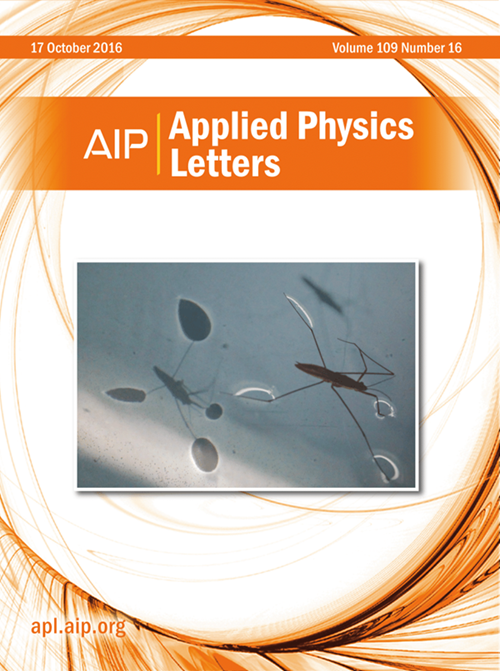Sc0.2Al0.8N Lamb wave filter with a high temperature stability using the strategy of double-layer SiO2 and groove structure
IF 3.5
2区 物理与天体物理
Q2 PHYSICS, APPLIED
引用次数: 0
Abstract
The Lamb wave filter (LWF) has a moderate bandwidth, and the conventional temperature compensation method with one layer of SiO2 on the Lamb wave resonator (LWR) will significantly reduce its effective electromechanical coupling coefficient. This, in turn, narrows the bandwidth of the LWF and limits its application range. This paper achieves high temperature stability for both the LWR and LWF by employing a strategy that combines a double-layer SiO2 and a groove structure based on a Sc0.2Al0.8N film. Finite element analysis is employed to investigate the effect of adding single or double layers of SiO2 films on the temperature stability of the Sc0.2Al0.8N LWR. The simulation results show that applying SiO2 to both the top and bottom of the Sc0.2Al0.8N film can mitigate the reduction in k2 while enhancing temperature stability. The groove structure in the piezoelectric layer can simultaneously improve the temperature coefficient of frequency (TCF) and k2 by altering the electric field distribution and boundary conditions. Measurement results show that the double-layer SiO2 improves the TCF of the LWR to approximately –10 ppm/°C. The grooves can further improve the TCF toward 0 ppm/°C and increase the k2 of LWR.采用双层SiO2和沟槽结构的策略制备了具有高温稳定性的Sc0.2Al0.8N Lamb波滤波器
Lamb波滤波器(LWF)具有中等带宽,传统的温度补偿方法在Lamb波谐振器(LWR)上加一层SiO2会显著降低其有效机电耦合系数。这反过来又缩小了LWF的带宽,限制了它的应用范围。本文通过采用双层SiO2和基于Sc0.2Al0.8N薄膜的沟槽结构相结合的策略,实现了低水堆和低水堆的高温稳定性。采用有限元方法研究了添加单层或双层SiO2薄膜对Sc0.2Al0.8N LWR温度稳定性的影响。模拟结果表明,在Sc0.2Al0.8N薄膜的顶部和底部同时添加SiO2可以减缓k2的下降,同时提高温度稳定性。压电层中的沟槽结构可以通过改变电场分布和边界条件,同时提高温度频率系数(TCF)和k2。测量结果表明,双层SiO2将LWR的TCF提高到-10 ppm/°C左右。在0 ppm/°C时,沟槽可以进一步提高TCF,提高LWR的k2。
本文章由计算机程序翻译,如有差异,请以英文原文为准。
求助全文
约1分钟内获得全文
求助全文
来源期刊

Applied Physics Letters
物理-物理:应用
CiteScore
6.40
自引率
10.00%
发文量
1821
审稿时长
1.6 months
期刊介绍:
Applied Physics Letters (APL) features concise, up-to-date reports on significant new findings in applied physics. Emphasizing rapid dissemination of key data and new physical insights, APL offers prompt publication of new experimental and theoretical papers reporting applications of physics phenomena to all branches of science, engineering, and modern technology.
In addition to regular articles, the journal also publishes invited Fast Track, Perspectives, and in-depth Editorials which report on cutting-edge areas in applied physics.
APL Perspectives are forward-looking invited letters which highlight recent developments or discoveries. Emphasis is placed on very recent developments, potentially disruptive technologies, open questions and possible solutions. They also include a mini-roadmap detailing where the community should direct efforts in order for the phenomena to be viable for application and the challenges associated with meeting that performance threshold. Perspectives are characterized by personal viewpoints and opinions of recognized experts in the field.
Fast Track articles are invited original research articles that report results that are particularly novel and important or provide a significant advancement in an emerging field. Because of the urgency and scientific importance of the work, the peer review process is accelerated. If, during the review process, it becomes apparent that the paper does not meet the Fast Track criterion, it is returned to a normal track.
 求助内容:
求助内容: 应助结果提醒方式:
应助结果提醒方式:


